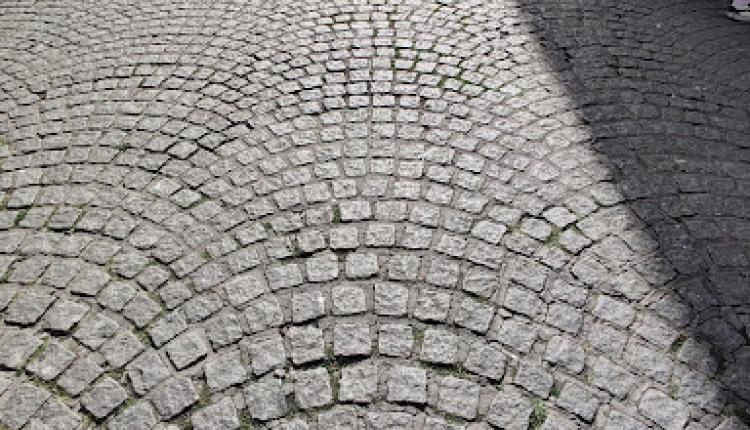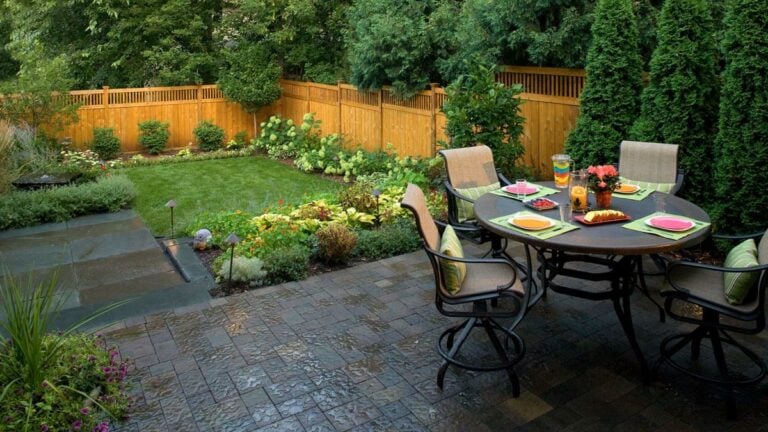Outdoor spaces earn their character from materials that look good on day one and continue to perform for decades. Natural Stone Pavers deliver that balance of beauty and resilience, shaping patios, driveways, and paths that feel grounded in place. Homeowners and designers increasingly want materials that age gracefully, maintain value, and tread lighter on the environment. With expert sourcing and fabrication, Stone Center turns this enduring material into precise formats and finishes that suit modern and traditional aesthetics alike. In the sections below, you’ll find practical guidance on design, durability, installation, and sustainability so you can plan an outdoor surface that is both stylish and built to last.
Design benefits of integrating natural pavers into modern architecture
Modern architecture thrives on clarity, proportion, and a tight relationship between indoor and outdoor spaces. Natural pavers serve this vision by introducing a tactile surface that reads as calm and cohesive, yet subtly alive under changing light. Their fine mineral variation, modest sheen, and honest texture create visual continuity between façades, terraces, and garden rooms. Natural Stone Pavers also come in calibrated thicknesses and modular sizes, allowing precise joints and patterns that echo the rigor of contemporary design. Whether you’re finishing a rooftop deck or defining a ground-level courtyard, the material’s quiet presence frames furniture, plantings, and water elements without visual noise.
How form meets function outdoors
A well-composed hardscape relies on proportion and rhythm as much as it does on color. Large-format rectangles can elongate a narrow space, while smaller modules add cadence to intimate seating areas. Designers often use a hierarchy of sizes to lead the eye—wide pavers for primary circulation and tighter formats for thresholds, steps, or transitions. This approach turns circulation into a design feature: movement feels intentional and the landscape gains a legible structure. Incorporating saw-cut edges near architecture and tumbled pieces at garden edges also blends crisp modern lines with relaxed planting beds.
Material finish further refines the architectural language. Flamed or textured faces improve traction and scatter glare, an asset around pools and sunny courtyards, while honed or lightly brushed surfaces introduce a tailored, furniture-like quality under covered terraces. Colorways—cool grays, warm beiges, earthy charcoals—can either harmonize with cladding or provide a restrained contrast that highlights the building’s silhouette. Because stone weathers by developing a gentle patina rather than fading abruptly, the palette remains credible over time. The result is a grounded outdoor experience that feels *resolved* in every season, with the stone acting as the connective tissue between structure, landscape, and sky.
Comparing durability and sustainability of various stone types
Durability in paving isn’t just about hardness; it’s about the stone’s behavior under real-world stress: freeze–thaw cycles, de-icing salts, vehicular loads, and UV exposure. Granite leads in compressive strength and abrasion resistance, making it a strong candidate for driveways and high-traffic walkways. Dense limestones—particularly those with low porosity—excel in patios and pool decks, delivering a balanced slip resistance and comfortable underfoot feel. Sandstone offers a richly stratified texture that reads warmly in gardens, though selection should favor tighter grain structures for cold climates. Basalt and porphyry bring fine-grained durability and a contemporary aesthetic, especially where higher traction is needed.
What weather really does to stone
Climate puts each stone type through a unique test. In freeze–thaw zones, lower absorption rates and careful edge detailing reduce the risk of spalling by minimizing trapped moisture. In coastal or poolside environments, choosing stones resistant to salt crystallization preserves the surface finish. Heat islands also matter; darker stones can run warmer, so pairing deeper tones with shaded areas or lighter joint sands moderates comfort. By tuning color, finish, and thickness to climate patterns, you maintain both longevity and the design intent without compromise.
Sustainability is best evaluated through quarry practices, transport distance, and the service life of the installation. Long-lived materials generally outperform short-cycle alternatives, and stone stands out with its inherent circularity—it can be lifted, relaid, or repurposed. Locally or regionally sourced options reduce transport emissions while rooting the project in its natural context. Compared to many manufactured surfaces, stone typically requires fewer chemicals over its lifespan, especially when installers specify breathable sealers and permeable bases to manage stormwater. When properly chosen and detailed, Natural Stone Pavers deliver a rare combination: structural stamina, gentle weathering, and credible environmental performance.
Best installation practices for patios, pathways, and driveways
Even the finest stone will underperform if the base is poorly executed. A durable installation starts with soil evaluation and proper excavation, followed by a well-compacted aggregate base that matches the site’s load and climate. Uniformity across the base layers prevents differential settlement, which is what causes lippage, rocking, and hairline cracking at edges. Edge restraints—concrete haunching or robust aluminum/steel systems—keep modules locked, preserving joint geometry under lateral loads. For patios and paths, careful attention to slope (typically 1–2%) ensures water moves away from structures and doesn’t pond on the surface.
Subgrade and base essentials
Subgrade strength is often underestimated, yet it determines how the entire system behaves. In clay-rich soils, geotextiles or geogrids boost stability and reduce pumping under repeated loads. A graded aggregate base topped with a compacted bedding layer—either concrete sand, permeable chip stone, or a setting mortar depending on design—provides the flatness required for tight joints. Joint material should be compatible with the chosen bedding: polymeric sands for dry-laid systems with controlled joint widths, or permeable aggregates when prioritizing infiltration. Sealers, if used, should remain breathable so the assembly can exhale moisture rather than trap it inside the stone.
Driveways and pool decks benefit from a few extra considerations. For vehicular applications, thicker pavers or a mortar-set system over a reinforced slab distribute forces more evenly; granite, basalt, or dense limestones handle tire shear particularly well. Around pools, slip-resistant finishes and lighter tones improve comfort, while detailing at drains and skimmers keeps edges crisp. Coordination early in design with Stone Center helps finalize thickness, finish, and module that align with your base strategy, reducing onsite modifications. With consistent compaction, reliable restraints, and thoughtful jointing, Natural Stone Pavers achieve the long service life they’re known for—and keep maintenance predictable.
2025 eco-conscious paving trends using locally sourced materials
Sustainability has matured from a marketing angle to a set of measurable practices. In 2025, project teams are prioritizing regional procurement, pushing for quarry-to-site transparency and optimizing logistics to minimize emissions. Designers are pairing stone with permeable base assemblies that return water to the soil profile, easing pressure on municipal systems and improving site ecology. Adaptive reuse is also gaining traction: salvaged stone slabs are recut into new modules, turning waste into current design language. Where new material is needed, low-impact extraction and efficient cutting reduce embedded energy while preserving the stone’s integrity.
Local-first sourcing strategies
Local and regional sourcing does more than shrink carbon footprints—it creates aesthetic coherence by echoing the geology of place. When the patio’s color and texture subtly match nearby outcrops or historic masonry, the landscape reads as authentic and contextual. Coordinating lead times with regional quarries and fabricators helps maintain project schedules, and it supports skilled labor within the community. Specifiers are increasingly requesting documentation on quarry stewardship, water recycling at fabrication facilities, and byproduct reuse, helping the industry standardize better practices.
Another notable 2025 trend is hybrid systems that combine stone with vegetation and bioswales to manage stormwater in place. Open-jointed layouts over permeable bases allow infiltration while preserving the refined aesthetic expected of high-design projects. Finish selection also leans natural—flamed, bush-hammered, or split-face—reducing chemical sealers and enhancing grip in all weather. Many owners are looking for materials that can be reconfigured over time; modular formats allow rearrangement as spaces evolve, keeping embodied impacts low. In this context, Natural Stone Pavers remain a durable, flexible choice that satisfies both design ambition and environmental rigor.
Enhancing outdoor spaces with color and texture variation
A successful hardscape turns color, texture, and pattern into a coherent story rather than a collage. Choosing a primary field tone—perhaps a cool gray or warm buff—and then layering subtle accents creates depth without visual clutter. Variation within a single quarry lot can be an asset: faint veining and mineral freckles add life that feels elegant rather than busy. Textures do similar work; a flamed finish scatters light and boosts traction, while a honed or brushed finish invites barefoot comfort under a pergola or covered dining area. By choreographing these elements, the surface feels intentionally crafted and comfortable to inhabit.
Blending tones for cohesion
Harmony comes from repetition with measured contrast. You might run a consistent module in the main patio, then alter orientation or insert a border at thresholds to cue movement. Keeping joint widths consistent preserves a clean architectural read, especially when pairing with linear grasses or modern furniture. Where the site transitions to garden paths, a shift to smaller modules and slightly more rustic edges softens the mood, letting plant textures play lead while the stone holds the rhythm. A limited palette—two or three complementary tones—often outperforms a broad spectrum that’s harder to manage over time.
Scale and light are decisive in how color appears outdoors. Darker stones absorb warmth and can visually ground a large open space, while lighter stones reflect light into shaded courtyards or narrow side yards. Consider how the surface will look at dusk under warm lighting and in the sharp midday sun; sampling onsite is invaluable. With tailored blends, Natural Stone Pavers can bridge the architecture’s tone and the garden’s complexity, delivering nuance without sacrificing clarity. Collaborating with Stone Center to review samples, finishes, and edge treatments ensures the final palette captures your intent and stands up to real-world use season after season.



